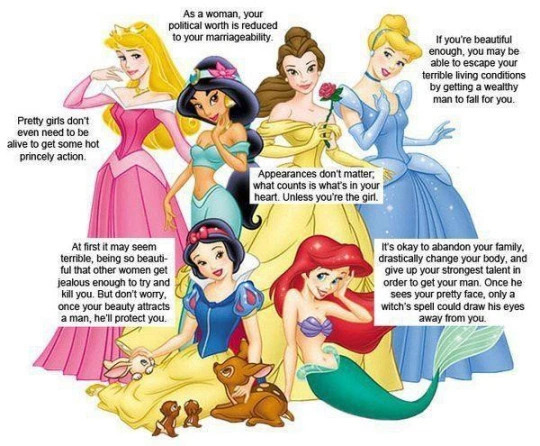#WGSST2230(3/5)
Text
Did We Grow Up on Classics that Promoted Hegemonic Beauty Standards?
This one is going to look familiar to most of us. The classics recreated by Disney were staples of so many childhoods (and adulthoods, depending on how nostalgic you’re feeling). But is it possible that we were being spoon-fed some painfully imbalanced standards of beauty and worth along gender lines? (I’ll just skip ahead for a second and say that yes, it is.) Looking back on the classics with some fresh, grown-up eyes we may notice some slightly (but not totally) subtle themes that blew by us as kids. For instance, there’s a glaring pattern of the “princess,” who is often a titular protagonist, having near-ubiquitous bust, waist, and hip dimensions. See it?

Each of the above also seems to have her canonical ills remedied by a common cure: a man. A wealthy man, a handsome man, a strong man, a virtuous man (not so much you on that last one, Sleeping Beauty) but the common denominator isn’t hard to spot. Cinderella, for example, escapes her living conditions with a makeover and a new rich husband. How likely is it that as kids, cues like these colored our perceptions later in life about what is truly beautiful and meaningful? (Again, yes.)

With women (and men) held to the unrealistic hegemonic standard that a super-thin waist and marriage prospects equal beauty, value, and success, what can we do to combat it? How can we release generations of women across race, age, and class lines from the claustrophobic box they’ve been placed in by dominant culture and the myriad media platforms that perpetuate and sell it to them?
We can start by looking it in the face and calling it what it is.
0 notes